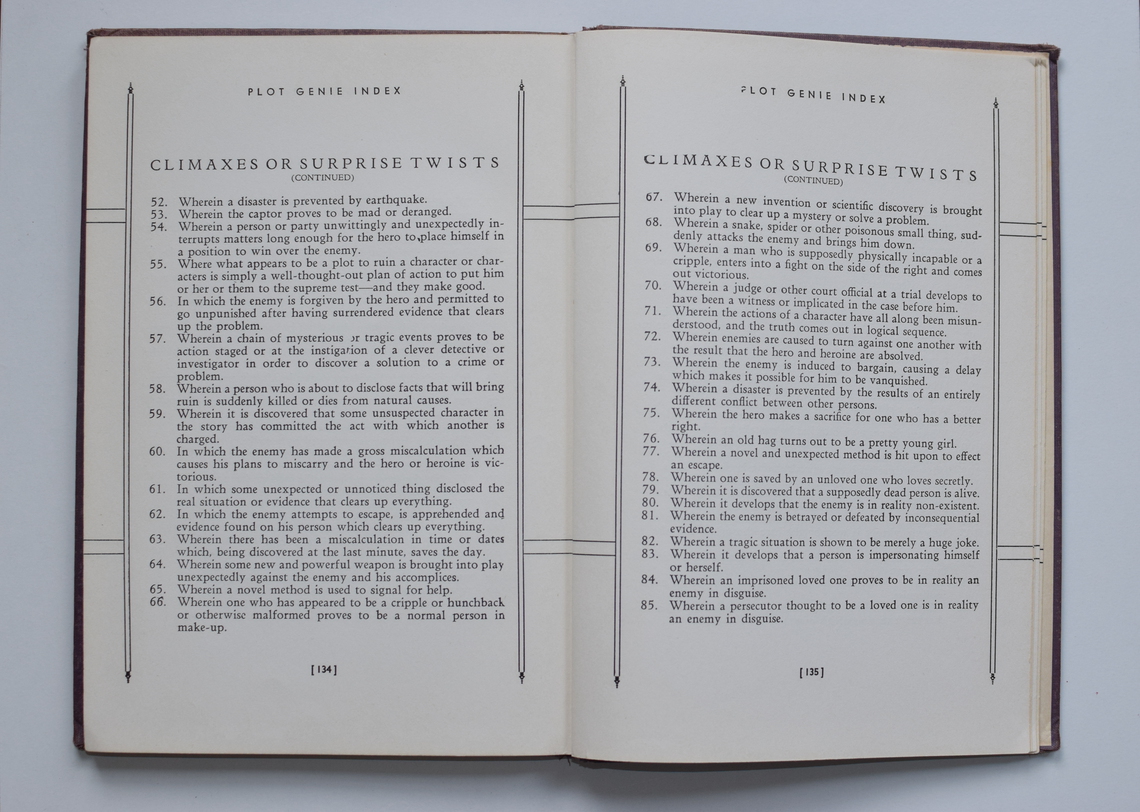Plot Genie Index
-
When Wycliffe Hill began writing the Plot Genie series in 1936, he promised to provide blocked writers with creative material at the spin of a wheel:
“With the aid of the Plot Genie, one does not have to wait for a rare flash of inspiration for a story. The Genie will provide a complete plot framework every five minutes, and I can show any author where it could have developed the plot structure of any story he ever wrote.”
Each Plot Genie had an index of “Plot Requisites,” such as “Locale,” “Character,” “Love Obstacle,” and “Climax.” For each “Plot Requisite,” the user would either randomly select a number or use the “Plot Robot” (a separately sold paper-wheel) to do so, follow that number to the index, and construct her plot according to its directions. The Plot Genie did not explicitly analyze of how stories work, as Polti did in his 36 Dramatic Situations, but its strategies for writing successful narratives implied an underlying taxonomic understanding of narrative and, consequently, an algorithmic method for its construction: take a locale, a handful of characters, one love obstacle, three complications, engineer one romantic predicament, and add one crisis before settling on a solution.
Introduction
- Label
- Plot Genie Index
- Author
- Wycliffe Hill
- Original Publication Date
- 1931
- New Publication Date
- 1935
- Publisher
- Glendale Academy Press
- Location
- RBML
- Case
- 3
